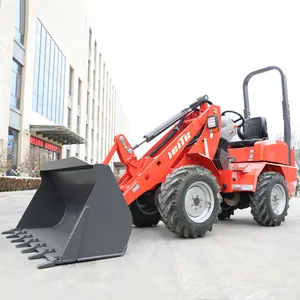Popular in your industry

















Top categories
About infrared asphalt heater
Cracks and potholes in asphalt pavements are common issues that can compromise the structural integrity of roads, driveways, and parking lots. To address these problems, asphalt contractors and maintenance crews often turn to innovative solutions, such as the infrared asphalt heater. This advanced technology is designed to efficiently and effectively repair damaged asphalt surfaces by using infrared heat to soften the existing asphalt. This guide will delve into the features, advantages, and applications of infrared asphalt heaters, shedding light on their role in the field of asphalt maintenance and repair.
How does an infrared asphalt heater work?
Before understanding how an infrared asphalt heater works, it is crucial to know the structure of the pavement. Asphalt pavement consists of layers, with the top layer being the surface course, the middle layer being the binder course, and the bottom layer being the base course. When an infrared asphalt heater is used, the infrared rays penetrate the surface course and reach the binder course. The heater then heats the binder course and the surface of the base course. Once the infrared rays are absorbed by the asphalt, it transforms into a pliable state. This allows the material to be easily worked on. The pliable asphalt can be raked, leveled, and compacted to create a seamless and durable repair.
What are the advantages of an infrared asphalt heater?
The asphalt reheater offers numerous benefits that make it an attractive choice for pavement repair and maintenance. One of the primary advantages of using an infrared asphalt heater is its ability to provide seamless and long-lasting repairs. By heating the existing asphalt to a pliable state, the infrared heater enables the repair material to bond with the surrounding pavement, creating a continuous surface that minimizes the risk of water infiltration and future cracking. This seamless repair not only enhances the structural integrity of the pavement but also contributes to a smoother and safer driving experience. Additionally, the controlled and localized heating process of the infrared asphalt heater helps in reducing the overall energy consumption, making it a more environmentally friendly option for asphalt repair.
How to use an infrared asphalt heater?
Using an infrared asphalt heater involves a systematic process to ensure effective and durable pavement repair. The first step is to clean the damaged area to remove any debris, vegetation, or loose asphalt. Once the area is clear, the infrared heater is positioned over the damaged section, and the heating elements are activated. The heater is then left in place for a specified time to allow the infrared rays to penetrate and heat the asphalt. During this time, the operator monitors the temperature of the asphalt to ensure it reaches the desired consistency for repair. After the asphalt is properly heated, any additional rejuvenators or recycling agents can be applied to enhance the workability of the material. The next step involves raking and leveling the softened asphalt to create a smooth and even surface. Once the repair is complete, the heated asphalt is compacted using a roller or compactor to ensure proper bonding with the surrounding pavement. The final step is to allow the repaired section to cool and cure, after which it is ready for traffic.
When to use an infrared asphalt heater?
The asphalt infrared machine is a versatile tool that can be used in various scenarios to address different types of pavement damage. One common application of infrared asphalt heaters is in repairing potholes, which are depressions or craters in the pavement caused by the failure of the underlying base material. The controlled heating provided by the infrared heater allows for precise and effective repair of potholes, ensuring a durable and seamless solution. Additionally, the infrared asphalt heater is also used in repairing cracks, which are linear openings in the pavement that can result from factors such as traffic loads, temperature changes, or aging. By heating the surrounding asphalt and rejuvenating the material, the infrared heater enables the cracks to be filled and sealed, preventing water infiltration and further deterioration. Infrared asphalt heaters are also employed in addressing surface defects, such as raveling and rutting, to restore the smoothness and skid resistance of the pavement. When selecting an infrared asphalt heater for sale, it is essential to consider factors such as the heating capacity, mobility, and control features to ensure it meets the specific repair requirements.










